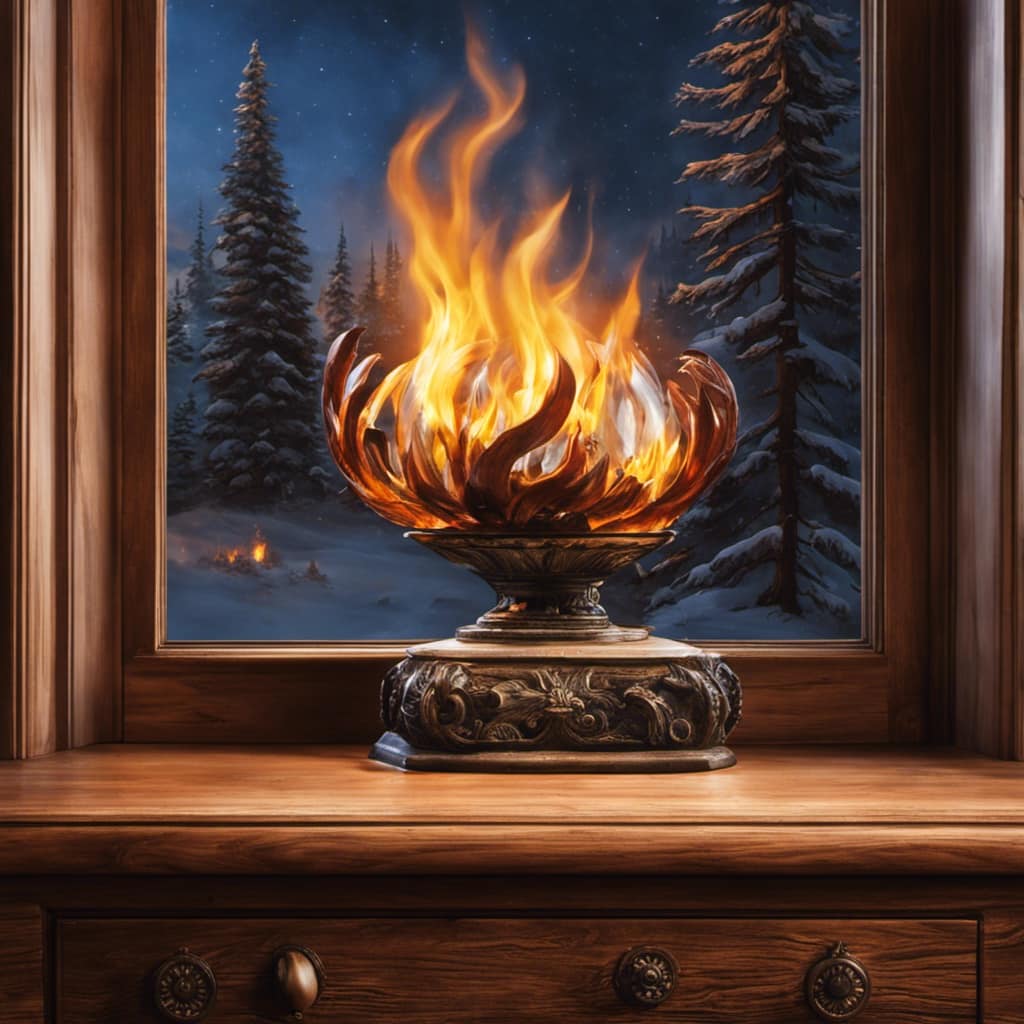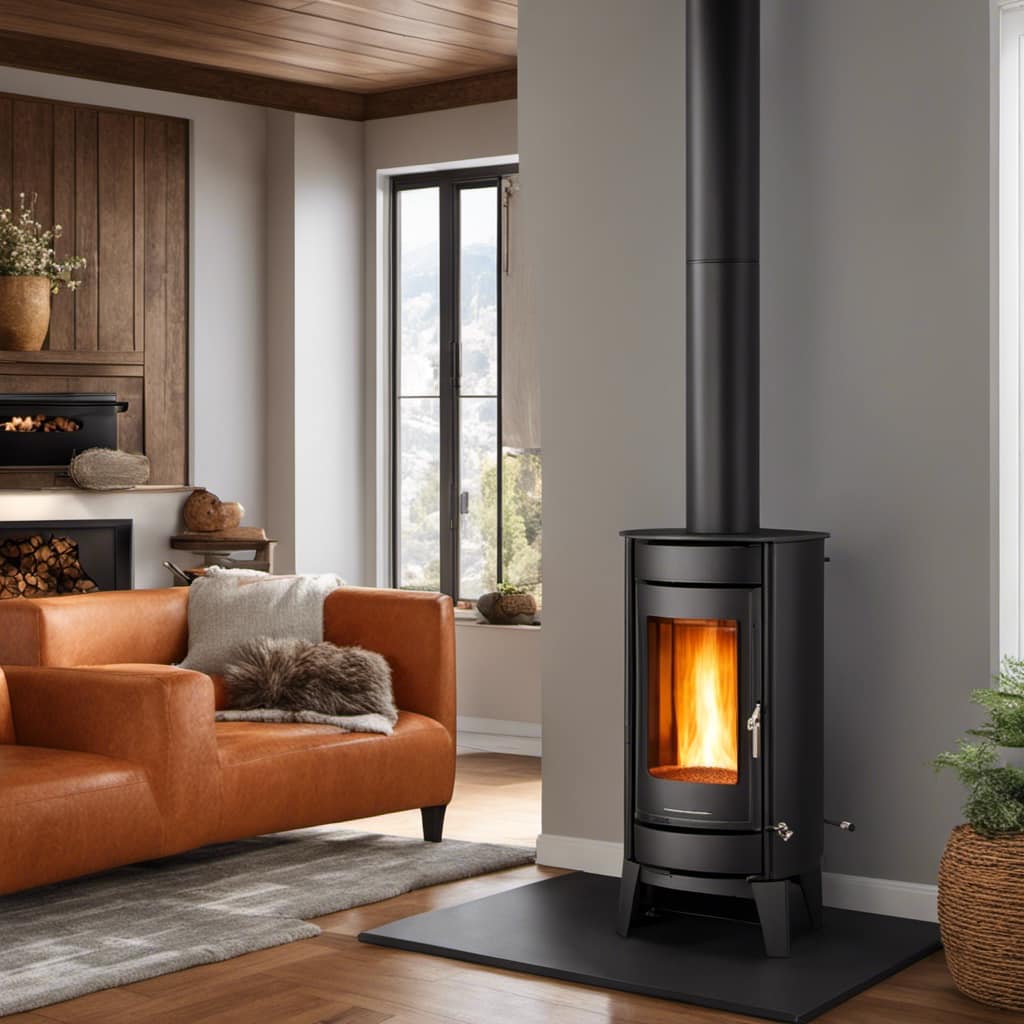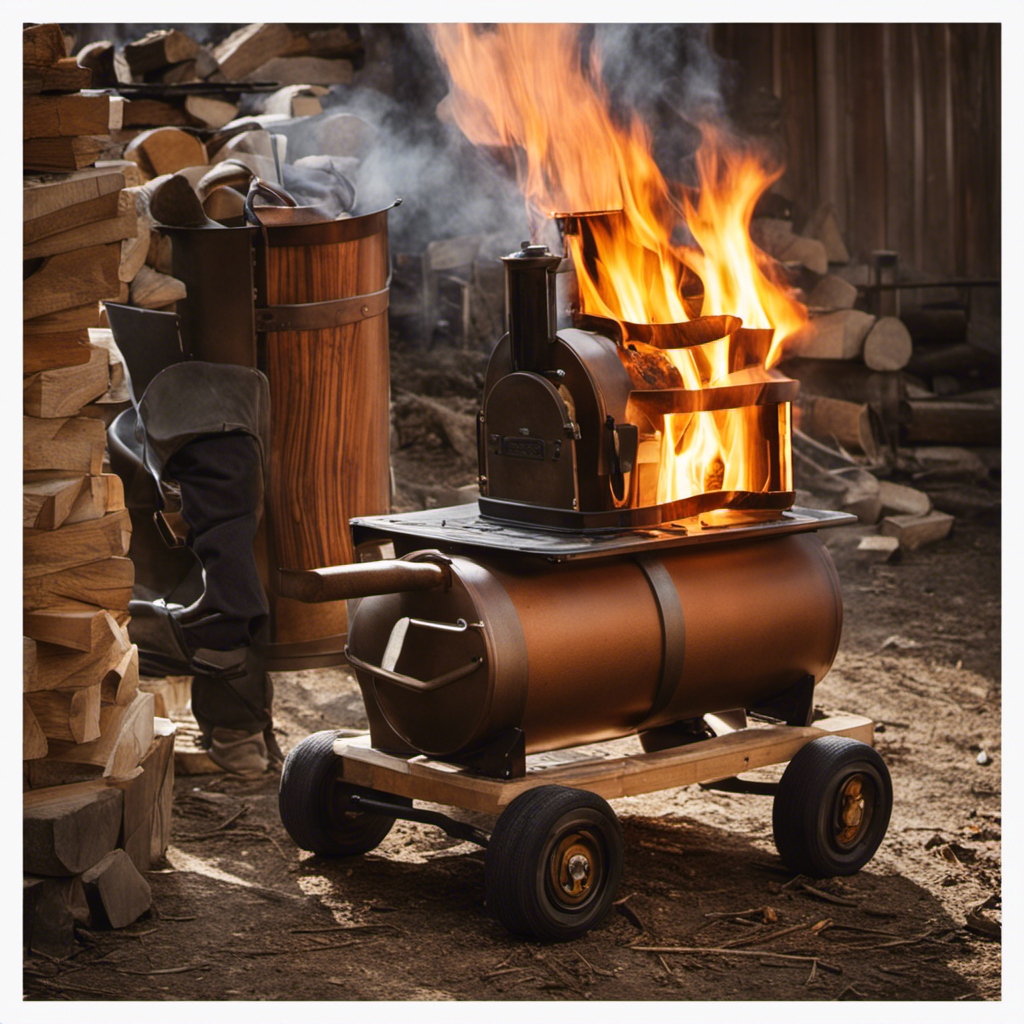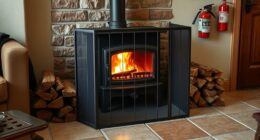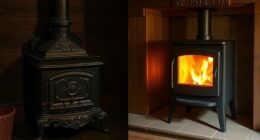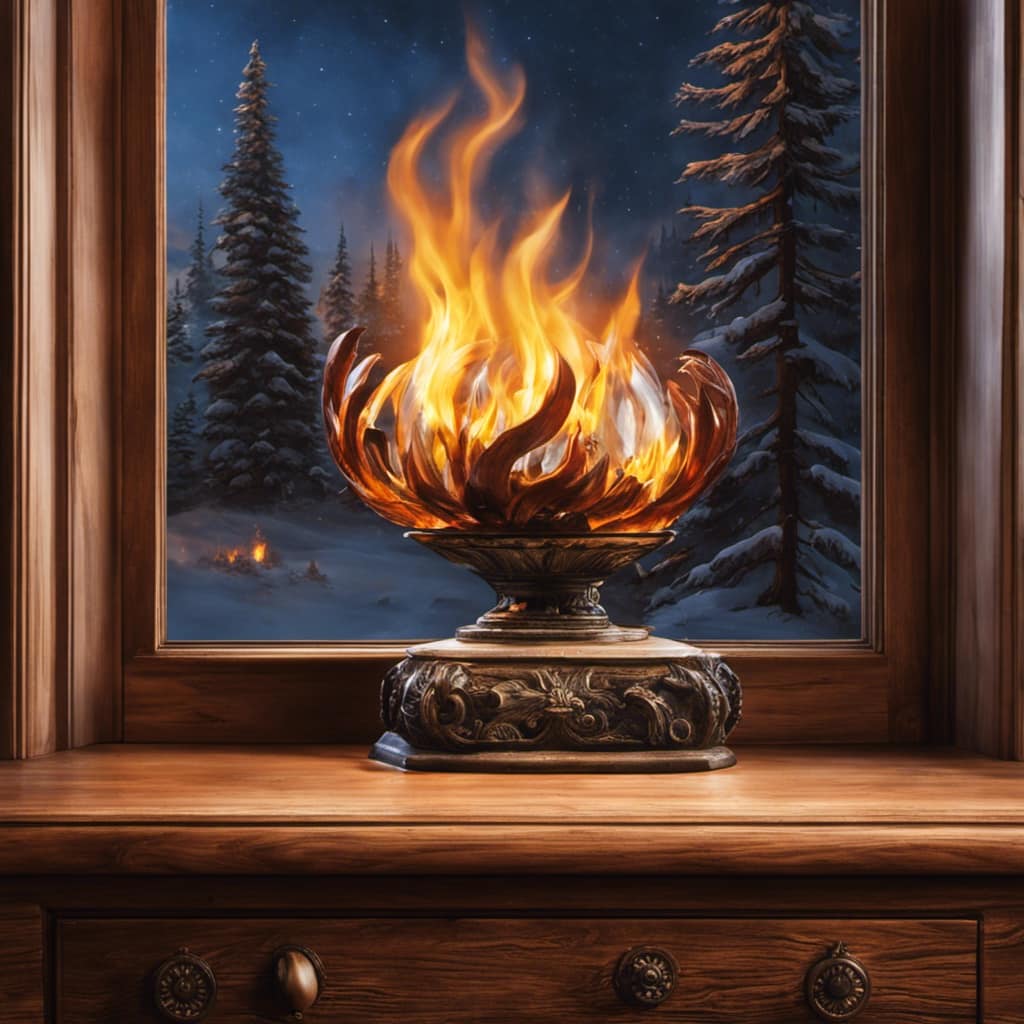
Have you heard about the amazing versatility of wood stove ashes? It’s such a waste to discard them when they have so many useful purposes. In this article, I will share different creative ways to utilize those ashes effectively.
From enriching your garden soil and making your own cleaning solutions, to repelling pests and even creating unique art projects, the possibilities are endless.
So, let’s dive in and explore the many wonders of wood stove ashes.
Key Takeaways
- Wood stove ashes can improve soil fertility by providing essential nutrients.
- They can help adjust the pH level of acidic soil, creating a more balanced growing environment.
- Wood stove ashes have various uses in soap-making, pottery, and art projects.
- They can be used for cleaning, deodorizing, and other practical purposes such as melting ice and deterring ants.
Using Wood Stove Ashes as Fertilizer
I find that using wood stove ashes as fertilizer greatly enriches my garden soil. The benefits of using wood stove ashes in gardening are numerous.

First and foremost, wood stove ashes are rich in essential nutrients such as potassium, phosphorus, and calcium. These nutrients are essential for plant growth and development. By incorporating wood stove ashes into the soil, I’m providing my plants with a natural and organic source of these nutrients.
In addition to providing essential nutrients, wood stove ashes also help to adjust the pH level of the soil. Wood stove ashes have a high alkaline content, which can help to neutralize acidic soil. This is particularly beneficial for plants that prefer a more neutral pH level. By using wood stove ashes as fertilizer, I’m able to create a more balanced and optimal growing environment for my plants.
Another advantage of using wood stove ashes as fertilizer is their ability to improve soil structure. The fine particles of the ashes help to loosen compacted soil, allowing for better water drainage and root penetration. This is especially beneficial for areas with heavy clay soils, as it helps to improve aeration and prevent waterlogging.
Overall, using wood stove ashes as fertilizer has proven to be a valuable practice in my gardening routine. It not only provides essential nutrients but also helps to adjust pH levels and improve soil structure. I highly recommend incorporating wood stove ashes into your gardening routine for healthier and more productive plants.

Incorporating Wood Stove Ashes Into DIY Cleaning Solutions
Using wood stove ashes in DIY cleaning solutions can be a cost-effective and eco-friendly way to tackle household chores. Not only does it save money by using a readily available resource, but it also reduces the need for harsh chemical cleaners.
Wood ash contains potassium hydroxide, a natural ingredient that can help break down grease and grime. One popular cleaning recipe involves mixing wood ash with water to create a paste that can be used to scrub away tough stains on surfaces like countertops or sinks.
For a more versatile cleaning solution, wood ash can also be combined with other ingredients such as vinegar or lemon juice to create an all-purpose cleaner. Another interesting use for wood stove ashes is making wood ash soap. This involves combining the ashes with lye and other oils to create a natural soap that can be used for cleaning dishes or even for personal hygiene. However, it’s important to note that working with lye can be dangerous, so proper precautions should be taken when attempting this recipe.
Overall, incorporating wood stove ashes into DIY cleaning solutions can be a great way to save money, reduce waste, and keep your home clean in an environmentally friendly way.

Enhancing Compost With Wood Stove Ashes
Enhancing compost with wood stove ashes can significantly improve the nutrient content and overall quality of the soil. Wood stove ashes are a valuable resource that can be used in gardening to provide essential minerals and trace elements to plants. When added to compost, wood stove ashes can enhance the decomposition process and boost the nutrient levels in the final product.
To better understand the benefits of composting with wood stove ashes, let’s take a look at the following table:
| Nutrient | Wood Stove Ashes | Compost Without Ashes | Compost With Ashes |
|---|---|---|---|
| Nitrogen | Low | Moderate | High |
| Phosphorus | Low | Moderate | High |
| Potassium | Low | Moderate | High |
As you can see, wood stove ashes significantly increase the levels of nitrogen, phosphorus, and potassium in the compost. These nutrients are essential for plant growth and development. Additionally, wood stove ashes can help neutralize acidic soils, making them more suitable for a wider range of plants.
When incorporating wood stove ashes into compost, it is important to use them in moderation. Excessive amounts of wood stove ashes can raise the pH of the soil and potentially harm plants. It is recommended to mix wood stove ashes with other organic materials, such as kitchen scraps and yard waste, to create a well-balanced compost mix.
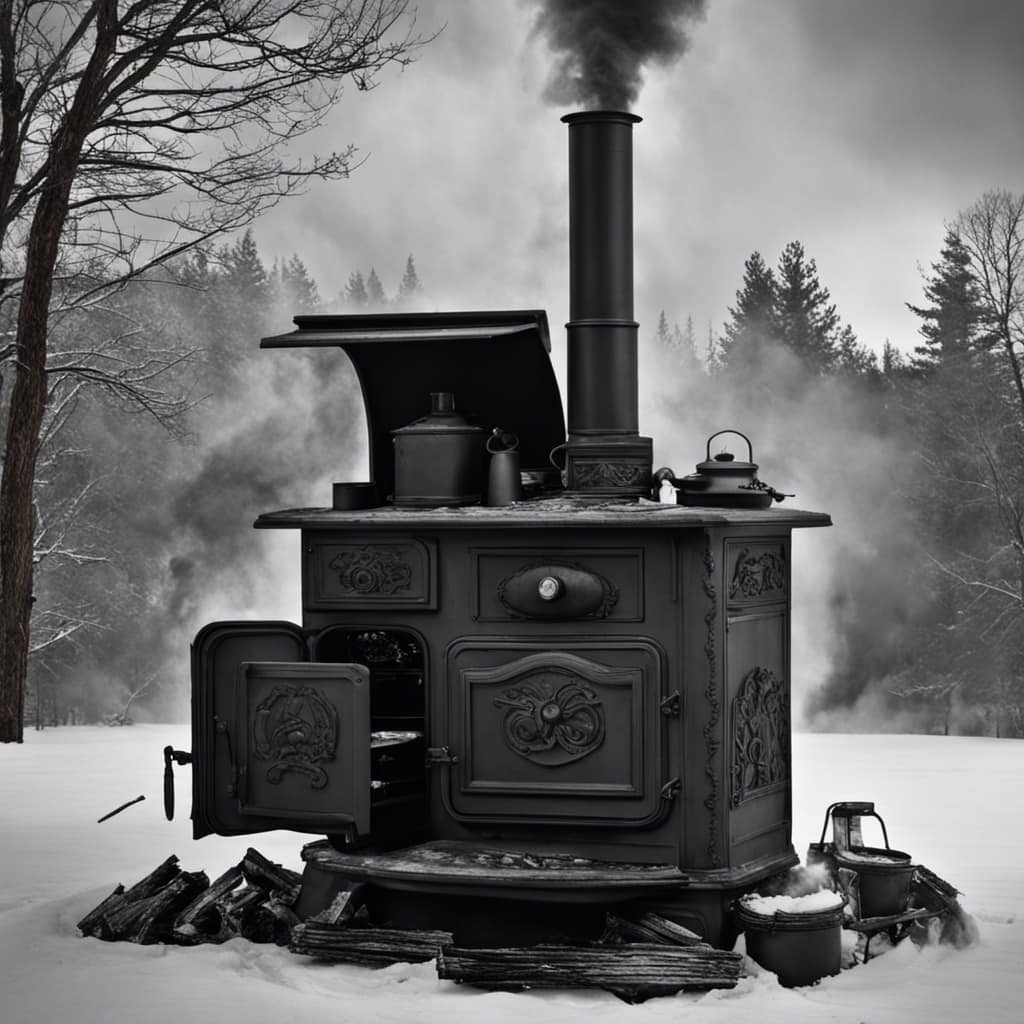
Using Wood Stove Ashes for Pest Control
Using wood stove ashes for pest control is a great way to naturally ward off unwanted critters in the garden. I’ve found that wood stove ashes serve as a natural repellent, deterring pests like slugs, snails, and even some insects.
It’s important to know the effectiveness of using wood stove ashes and the safe application methods to ensure the best results.
Ashes as Natural Repellent
I’ve found that wood stove ashes make a great natural repellent for pests in the garden. When I discovered this alternative use for wood stove ashes, it was a game-changer for me.
Not only are wood stove ashes abundant and easily accessible, but they also have powerful repellent properties that can keep pests at bay without the need for harmful chemicals. The high alkaline content in the ashes acts as a deterrent to pests like slugs, snails, and even certain insects.

To use wood stove ashes as a natural repellent, simply sprinkle a thin layer around the base of your plants or create a barrier around your garden beds. Reapply after rainfall or as needed.
This method isn’t only effective but also environmentally friendly, making it a win-win for both your garden and the planet.
Effectiveness Against Garden Pests
The natural repellent made from the ashes effectively keeps garden pests away from my plants.
Using wood ash as an organic pest control method has several benefits.
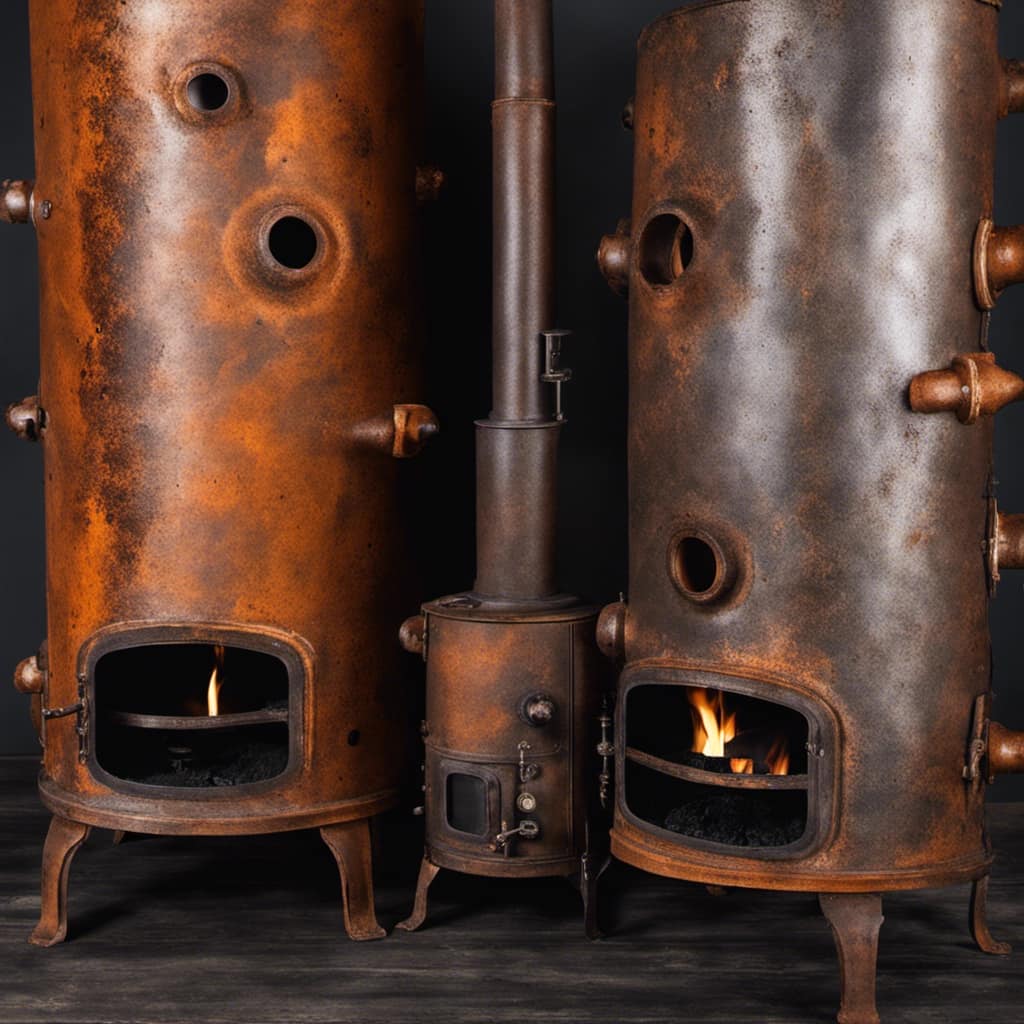
First, wood ash contains high levels of potassium, which helps plants grow and strengthen their immune systems against pests.
Additionally, the abrasive texture of the ashes deters insects and slugs from crawling onto leaves and stems.
Furthermore, the alkaline properties of wood ash make it an effective deterrent against certain pests, such as aphids and snails.
However, it’s important to note that wood ash should be used sparingly and with caution. Excessive use can raise the pH level of the soil, which may harm some plants.
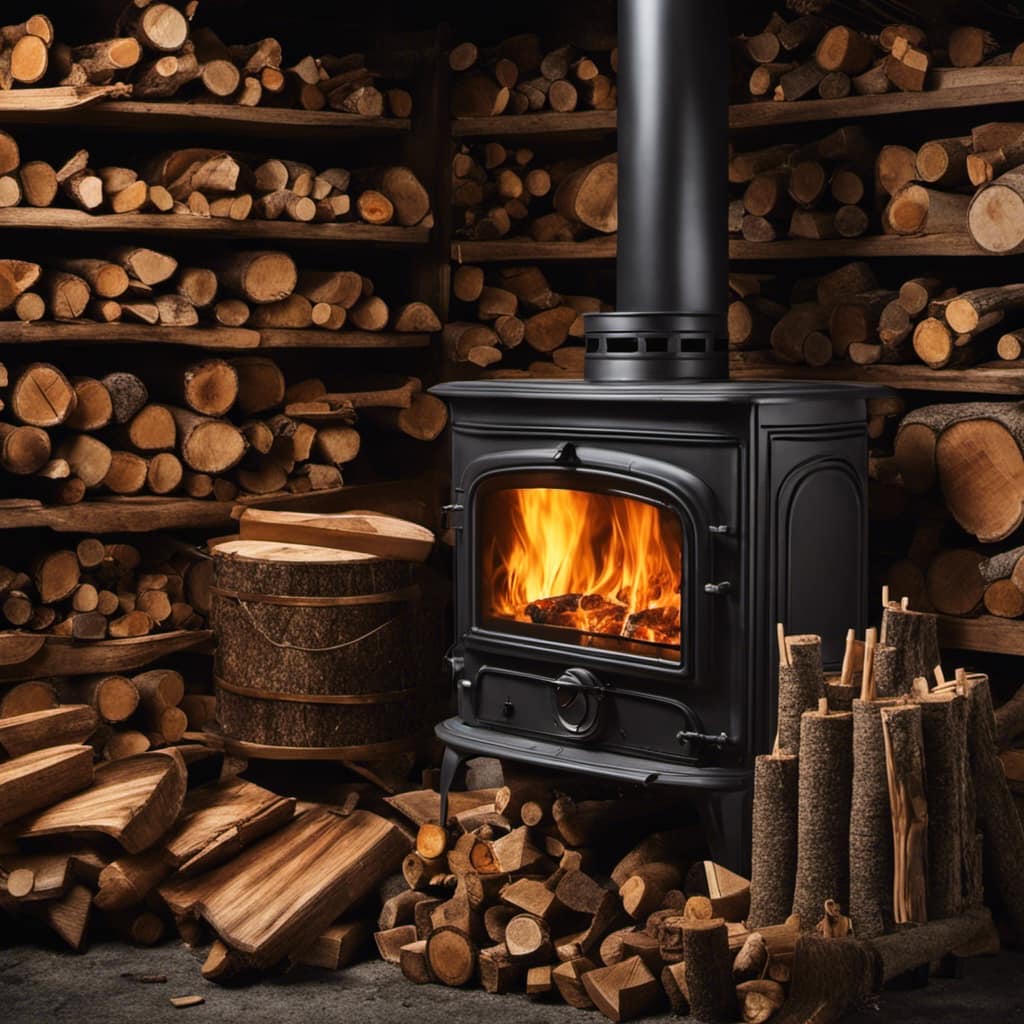
Therefore, safe application methods are crucial to ensure the effectiveness and health of the plants.
Safe Application Methods
To prevent harm to my plants, it’s important to apply wood ash sparingly and with caution. While wood ash can be beneficial to the soil, it should be used in moderation and with proper safety measures.
First and foremost, it’s crucial to store wood ash safely to avoid potential health hazards. Keep it in a metal container with a tight-fitting lid, away from flammable materials.
When applying wood ash to the garden, wear gloves and a mask to protect yourself from any potential irritants. Start by sprinkling a thin layer of ash around the base of plants, avoiding direct contact with stems and foliage. Be mindful not to overdo it, as excessive application can raise the soil pH and disrupt nutrient balance.
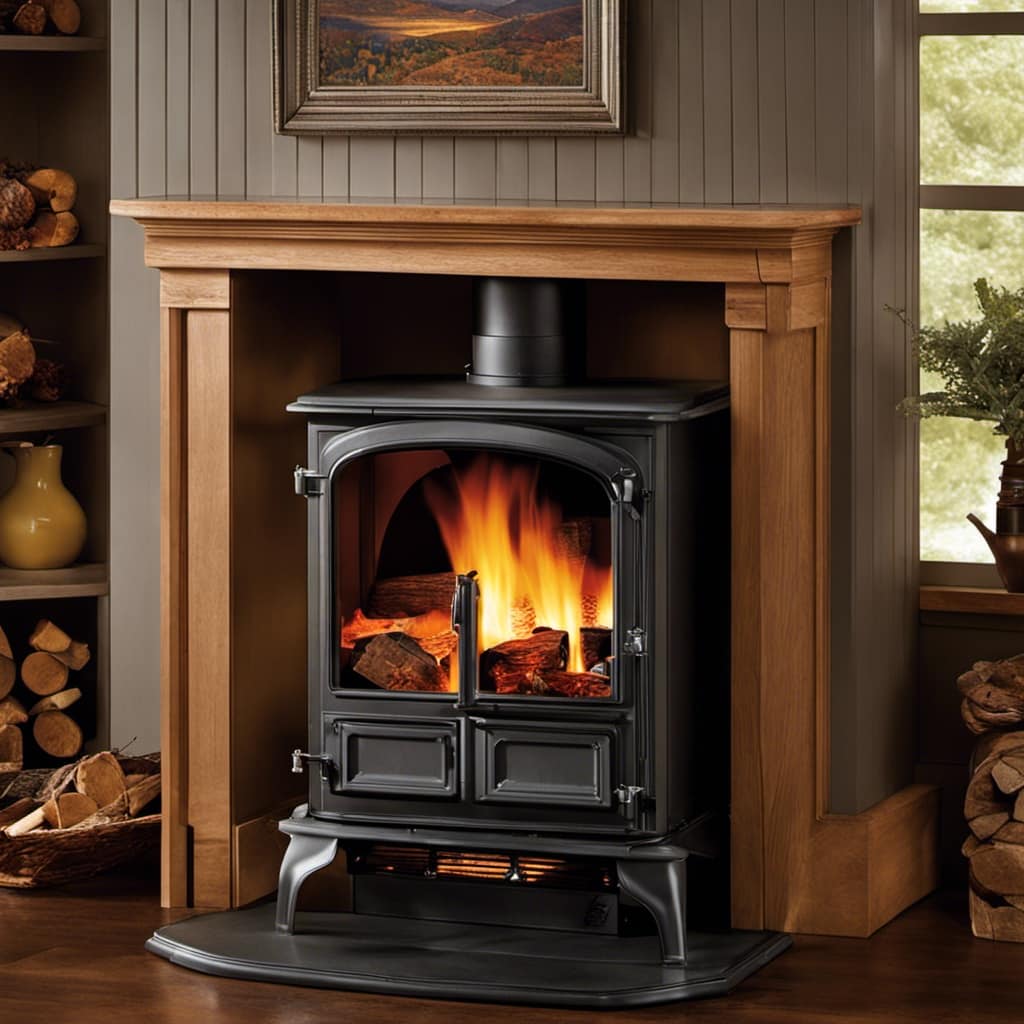
Creating Natural Soap With Wood Stove Ashes
Using wood stove ashes to create natural soap is an effective way to recycle materials and make a useful product. As someone who’s passionate about sustainable living, I’ve discovered the numerous benefits of making wood stove ash soap.
Here are three reasons why you should consider trying it yourself:
-
Environmental Benefits: By using wood stove ashes, you’re reusing a byproduct that would typically be discarded. This reduces waste and helps to minimize the environmental impact of your wood-burning activities.
-
Skin Benefits: Wood stove ash soap is known for its exfoliating properties. The fine particles of ash gently remove dead skin cells, leaving your skin feeling smooth and rejuvenated. Additionally, the alkaline nature of the ash helps to balance the pH levels of your skin, preventing dryness and irritation.
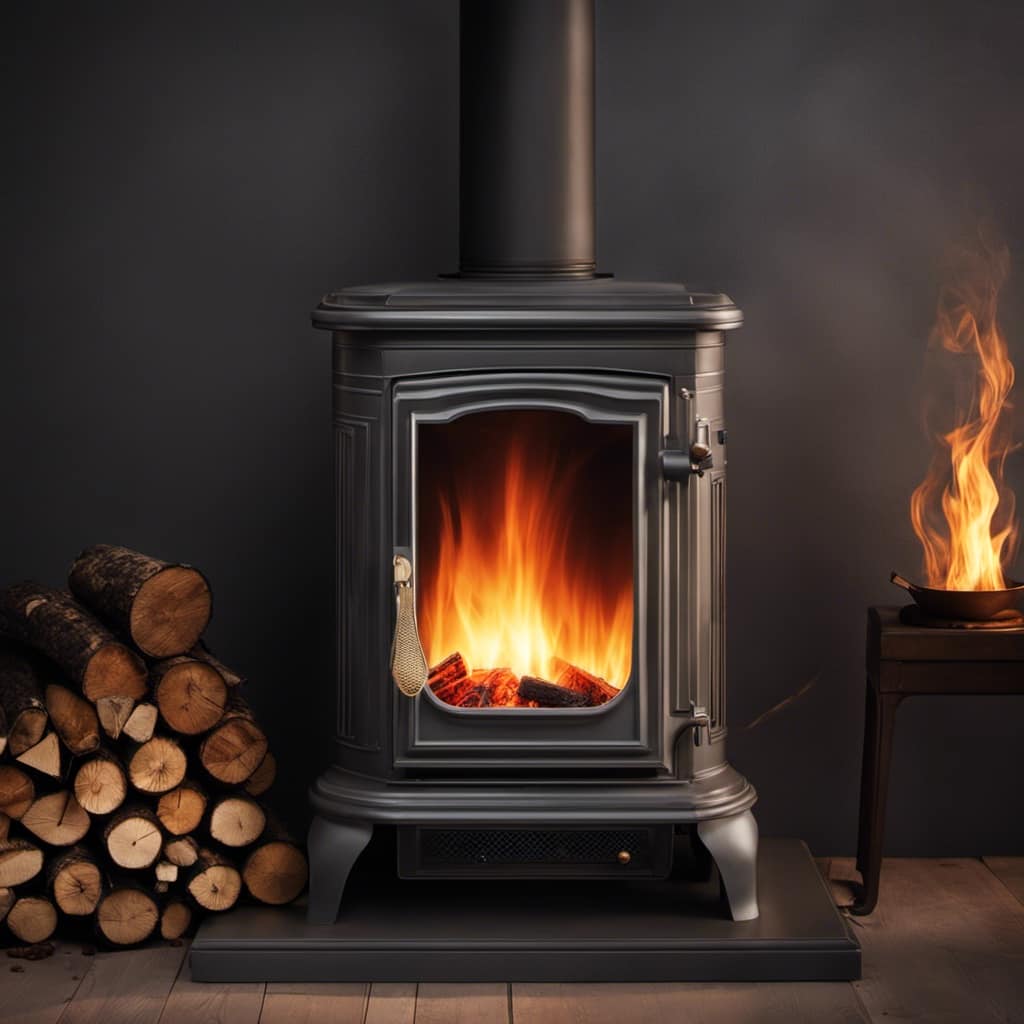
-
Simple Recipe: Making wood stove ash soap is surprisingly easy. All you need is a few basic ingredients, such as wood stove ashes, water, and oils. There are many online resources and tutorials available that provide step-by-step instructions for creating your own unique soap blend.
To make your own wood stove ash soap, start by collecting a sufficient amount of clean and sifted ashes. Mix the ashes with water to create a lye solution. Then, combine the lye solution with oils of your choice, such as olive oil or coconut oil. Follow a trusted recipe to ensure safety and proper measurements. Once you’ve created your soap mixture, pour it into molds and allow it to cure for several weeks.
Enjoy the satisfaction of knowing that you’ve transformed waste into a valuable and eco-friendly product.
Wood Stove Ashes in Art and Crafts Projects
As an avid artist, I love incorporating wood stove ashes into my art and crafts projects because they add a unique and rustic texture to my creations. Wood stove ashes can be used in various ways to enhance different art forms, such as pottery and papermaking.

When it comes to pottery, wood stove ashes can be mixed with clay to create a glaze that gives a beautiful, earthy finish to the final piece. The ashes contain minerals like potassium and calcium, which react with the heat during the firing process, resulting in stunning effects on the pottery’s surface. The ash glaze can vary in color, from pale gray to deep brown, depending on the type of wood burned in the stove.
In papermaking, wood stove ashes can be used to make handmade paper with a unique texture. By adding a small amount of ashes to the pulp during the papermaking process, the resulting paper will have a slightly rough and speckled appearance. This adds visual interest and a rustic feel to the finished product.
Using wood stove ashes in art and crafts projects allows me to create pieces that aren’t only visually appealing but also have a connection to nature. The texture and earthy tones that the ashes provide add depth and character to my artwork, making it truly one-of-a-kind.
Frequently Asked Questions
Can Wood Stove Ashes Be Used as a Substitute for Traditional Fertilizer?
Using wood stove ashes as a soil amendment can be a great alternative to traditional fertilizers. The benefits of using wood stove ashes in gardening are numerous.
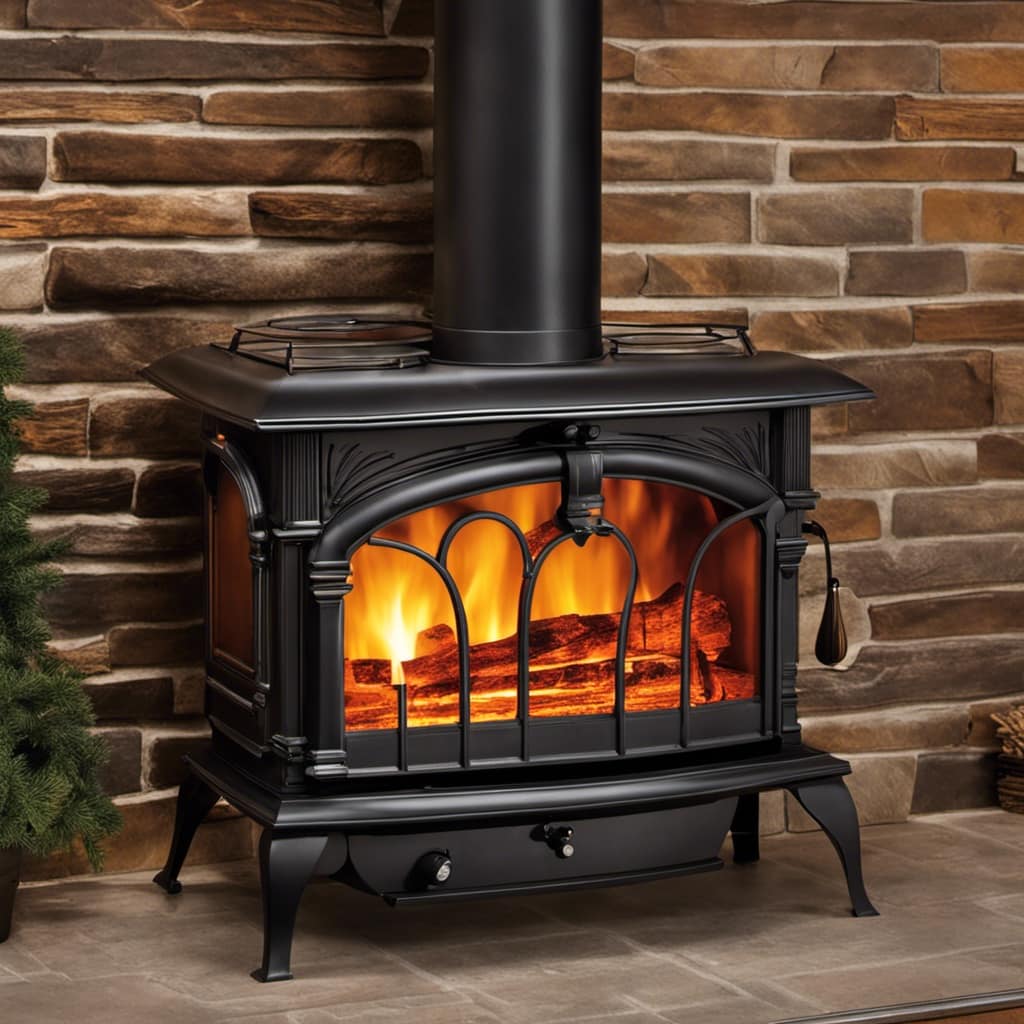
They contain important nutrients like potassium, calcium, and magnesium that can enrich the soil and promote healthy plant growth. Additionally, wood stove ashes can help raise the pH level of acidic soils, making them more suitable for a wider range of plants.
Overall, incorporating wood stove ashes into your gardening routine can be a beneficial and eco-friendly choice.
Are There Any Safety Precautions to Consider When Using Wood Stove Ashes for Pest Control?
When it comes to using wood stove ashes for pest control, there are definitely some safety precautions to consider.
It’s important to remember that wood stove ashes can be caustic and may contain harmful chemicals. Before using them, make sure to wear protective gloves and goggles.

Also, be cautious not to inhale the ashes or let them come into contact with your skin.
Taking these safety measures will help ensure that you can effectively use wood stove ashes for pest control without any harm.
Can Wood Stove Ashes Be Used in Indoor Cleaning Solutions?
Indoor cleaning can be made easier with the use of wood stove ashes. These ashes can act as a natural abrasive, helping to remove stubborn stains and grime. They can be mixed with water or other cleaning agents to create a paste or solution that can be applied to surfaces like countertops or tiles.
Just be sure to test a small area first to ensure it doesn’t damage or scratch the surface.
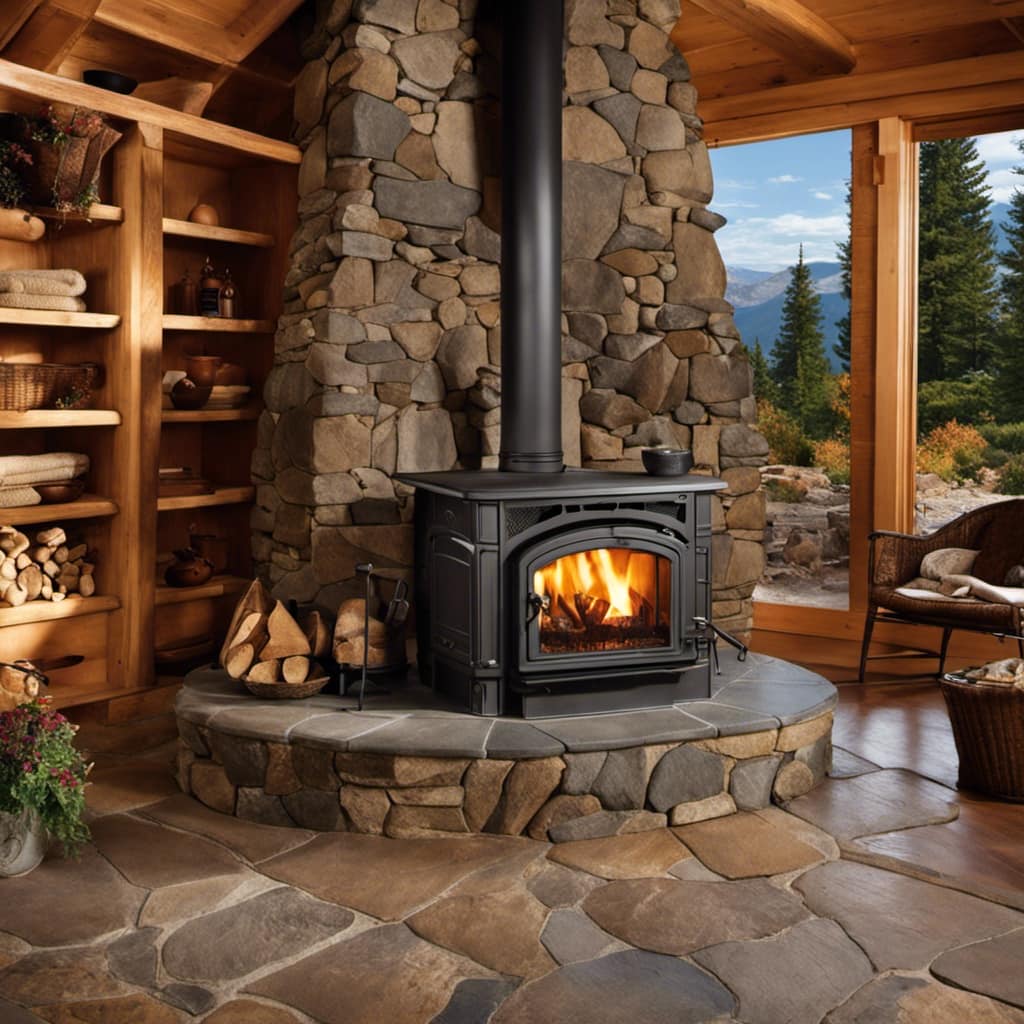
How Can Wood Stove Ashes Be Incorporated Into Compost Without Affecting the Ph Level?
Using wood stove ashes in garden soil can be a great way to enrich the nutrient content and improve the overall health of your plants. However, it’s important to be cautious about the pH level.
To incorporate wood stove ashes into compost without affecting the pH level, you can mix them with other organic materials such as kitchen scraps, grass clippings, and leaves. This will help to balance the pH and create a nutrient-rich compost for your garden.
Additionally, you can also consider incorporating wood stove ashes into homemade soap for a natural and effective cleaning solution.
What Types of Art and Crafts Projects Can Be Created Using Wood Stove Ashes?
Art projects and DIY crafts offer endless possibilities for using wood stove ashes.

From creating unique textured paintings to making homemade soap or candles, the incorporation of these ashes adds a distinct touch to your creations.
Their fine, powdery texture can also be used to make homemade paper or mixed with glue for a rustic, textured effect on sculptures.
The versatility of wood stove ashes makes them a valuable resource for artistic expression and creativity.
Conclusion
In conclusion, wood stove ashes can be repurposed in various ways, making them a valuable resource rather than just waste.

One interesting statistic to highlight is that wood stove ashes can contain up to 10% potassium, an essential nutrient for plant growth. This emphasizes the potential of using wood stove ashes as a natural fertilizer to improve soil fertility and enhance plant health.
By incorporating wood stove ashes into our daily lives, we can reduce waste and create a more sustainable and eco-friendly environment.
Growing up surrounded by the vast beauty of nature, Sierra was always drawn to the call of the wild. While others sought the comfort of the familiar, she ventured out, embracing the unpredictable and finding stories in the heartbeat of nature.
At the epicenter of every remarkable venture lies a dynamic team—a fusion of diverse talents, visions, and passions. The essence of Best Small Wood Stoves is crafted and refined by such a trio: Sierra, Logan, and Terra. Their collective expertise has transformed the platform into a leading authority on small wood stoves, radiating warmth and knowledge in equal measure.

